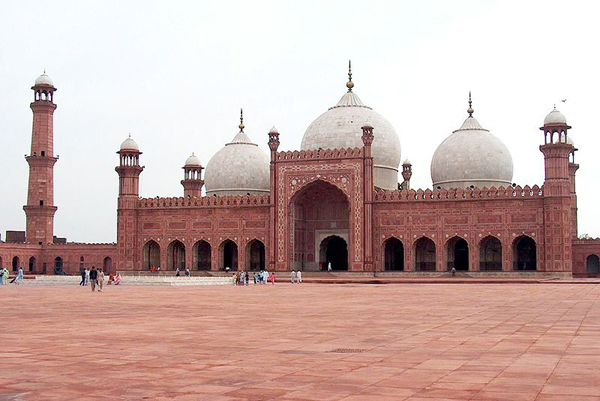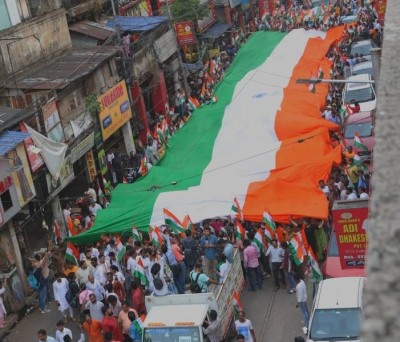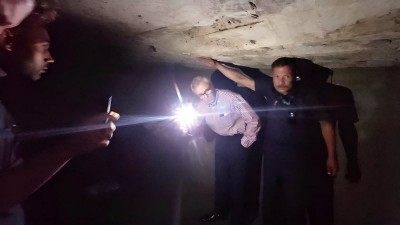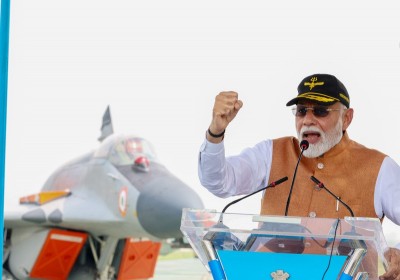
Mounting Insecurity
On February 13, 2015, at least 22 Shias were killed and another 50 were injured when a three member suicide squad attacked an Imambargah in the Phase-5 locality of the Hayatabad area in Peshawar, the provincial capital of Khyber Pakhtunkhwa (KP). As the entrance of the Imambargah is heavily guarded, the terrorists, dressed in Police uniforms, entered the Imambargah from another side of the mosque, cutting through barbed wire. The attack was executed when around 800 worshippers were offering Friday prayers. Of the three suicide bombers who entered the mosque, only one was able to blow himself up. A second was killed by Security Force (SF) personnel, while the third was arrested in an injured condition. Claiming responsibility for the attack, TTP ‘spokesperson’ Muhammad Khorasani declared, “It is the revenge of Dr. Usman who was hanged for attack on the Army’s headquarters.” Mohammed Aqeel aka Dr. Usman was among the two convicted terrorists who were hanged at the Faisalabad District Jail in the night of December 19, 2014.
On January 30, 2015, at least 61 Shias were killed and more than 50 were injured in a bomb attack on Karbala-e-Moalla Imambargah in the Lakhidar area of Shikarpur District in Sindh. More than 300 worshippers were inside the double-storey compound of the Imambargah and the prayer leader, Maulvi Tanveer Hussain Shah, was delivering the Friday sermon, when the bomb exploded. Ahmed Marwat of Jundullah, declared, “We claim responsibility for attack on Shias in Shikarpur very happily. Our target was the Shia community… They are our enemies.”
On January 9, 2015, eight persons were killed and another 25 were wounded in a bomb blast inside the Aun Muhammad Rizvi Imambargah in the Chittian Hattian locality of Rawalpindi city in Punjab. The blast occurred when prayers were in progress at the Imambargah.
Though terrorist formations have cited different reasons for these attacks, the reality is that the Shias in particular and all religious minorities in general, are under relentless attack across Pakistan. According to partial data compiled by the South Asia Terrorism Portal (SATP), out of 226 civilian fatalities in the current year, 2015, (all data till February 22, 2015), at least 105, among those whose identities were confirmed, were Shia. The number has increased dramatically, after a sharp decline in 2014. Through 2014, out of a total of 1,781 civilian fatalities, Shias (identities confirmed) accounted for 116, as against 504 Shias killed out of a total of 3,001 civilian fatalities in 2013.
The actual situation is, likely, worse. According to the United States (US) Commission on International Religious Freedom (USCIRF) report titled “Violence towards Religious Communities in Pakistan”, published in August 2014, over the one-year period from July 2013 to June 2014, at least 430 people were killed in a total 122 attacks against minorities. These include 222 Shias in 54 attacks; 128 Christians in 22 recorded incidents; 10 Ahmadis in 10 such attacks; and two Sikhs in three attacks. Four attacks were recorded on the Hindu community in this period, with no fatality reported. 29 attacks resulted in 68 fatalities among other religious/sectarian groups.
The systematic persecution of religious minorities continues amidst prevailing anarchy across the Pakistan. The SATP database recorded at least 5,496 terrorism-related fatalities, including 1,781 civilians, 533 SF personnel and 3,182 terrorists, in 2014 as against 5,379 such fatalities, including 3,001 civilians, 676 SF personnel and 1,702 terrorists. In 2015, fatalities have already touched at least 697 (data till February 22), including 226 civilians, 59 SF personnel and 412 terrorists.
While civilian fatalities recorded a steep decline in 2014, the level of brutality saw dramatic escalation. In particular, in one of the most barbaric acts of terror in the country, a seven-member TTP suicide squad killed at least 135 school children, ten school staff members, including the Principal, and three soldiers in an attack on the Army Public School (APS), Peshawar (capital of KP) on December 16, 2014. Schools and children have been targeted by terrorists before, but there was a conspicuous qualitative escalation in the Peshawar atrocity.
2014 also saw fewer SF fatalities, in comparison to 2013. Fatalities in this category have been on a decline since 2012, primarily due to a conscious effort by the SFs to avoid direct engagements with the terrorists on ground. On the other hand, terrorist fatalities, which had also been declining since 2012, for similar reasons, recorded a steep increase in 2014, with SFs launching a massive – primarily aerial – operation in NWA in the aftermath of the attack on Karachi Airport on June 8-9, 2014, in which at least 33 persons, including all ten attackers, were killed. The operation named Zarb-e-Azb, launched at 01:30am [PST] on June 15, 2014, still continues. The Director General (DG) of Inter Services Public Relations (ISPR), Major General Asim Saleem Bajwa, on January 16, 2015, claimed that SFs had killed 2,000 ‘terrorists’ under Operation Zarb-e-Azb, and also disclosed that 200 soldiers had been killed and another 800 had sustained injuries. No independent verification of these figures, or of the identities of the ‘terrorists’ killed, is possible, as media access to areas under the Operation is severely restricted.
Other parameters of violence, including suicide attacks, explosions, and major incidents, varied noticeably. Suicide attacks and resultant fatalities declined, with 336 killed in 25 such incidents in 2014, as against 43 suicide attacks resulting in 751 fatalities in 2013. Similarly, incidents of explosion and resultant fatalities in 2014 registered a sharp decline, from 574 incidents and 1,624 deaths in 2013, to 388 such incidents accounting for 846 fatalities through 2014. However, the number of major incidents (each involving three or more fatalities) and resultant deaths in 2014 increased, with 402 incidents and 4,173 fatalities, up from 355 incidents and 3,268 fatalities in 2013.
Violence was reported from across the country. FATA retained the distinction of being the most violent region, with the highest fatalities in 2014 (2,863), followed by Sindh (1,180), Balochistan (653), KP (617), Punjab (180), and Gilgit-Baltistan (3). In 2013, FATA with 1,716 fatalities, was the worst-affected, followed by Sindh (1,668), Balochistan (960), KP (936), Punjab (81), and Gilgit-Baltistan (18). While fatalities increased in FATA and Punjab in 2014, Balochistan, KP, Sindh and Gilgit-Baltistan witnessed some relief, as compared to the preceding year. SATP data indicates a dramatic rise in fatalities in Punjab, reversing a declining trend in the Province since 2010. Punjab has, for years, served as an ideological source, sanctuary and recruitment ground for various terrorist formations in Pakistan, and saw civilian fatalities increased from 64 in 2013, to 132 in 2014. On January 1, 2015, Awami National Party (ANP) Central General Secretary Mian Iftikhar Hussain asserted that Punjab was a “training centre for terrorists and their masterminds” and demanded that the Government initiate decisive action against the terrorist leadership and infrastructure in the Province. He stressed, further, that “terrorism could not be eliminated from the country until an operation began against terrorist organisations in Punjab”. Pressing for action against terrorists, Hussain remarked that “there should be no distinction between good Taliban and bad Taliban and state institutions should take across-the-board action against terrorists.”
The threat of terrorism in Pakistan has been augmented further, as reports of the Islamic State’s (IS) outreach into the country gathered force. In June 2014, IS released a ‘world domination map’, including Pakistan within its projected ‘Khorasan’ region. IS now has a native Pakistani national - Hafiz Saeed Khan, a former 'commander' of the Tehreek-e-Taliban Pakistan (TTP) - as its Ameer (chief) for ‘Khorasan’. Khan replaced Afghan national Abdul Rahim Muslim Dost as theAmeer of the Khorasan Chapter.
Significantly, General John Campbell, the commander of The Resolute Support Mission, the new mission of US and NATO Forces in Afghanistan, warned on January 18, 2015, that IS was recruiting in Afghanistan and Pakistan: "We are seeing reports of some recruiting. There have been some night letter drops, there have been reports of people trying to recruit both in Afghanistan and Pakistan, quite frankly.”
The issue of ‘disappearances’, the continuing recovery of dead bodies, and the mounting numbers of missing persons continue to haunt the country. Pakistan’s Attorney General (AG) Salman Aslam Butt, on February 10, 2015, told a two-judge bench of the Supreme Court, hearing an application filed by Voice for Baloch Missing Persons (VBMP) Chairman Nasrullah Baloch, that 4,557 dead bodies had been recovered from all over the country over the preceding five years, and that 266 of these were unidentified.
Meanwhile, an orchestrated political drama brought Pakistan under siege during the latter part of 2014. Beginning August 16, 2014, Constitution Avenue in Pakistan's capital, Islamabad, became the epicenter of violent demonstrations, with thousands belonging to the Imran Khan led-Pakistan Tehreek-e-Insaf (PTI) and cleric Tahir-ul-Qadri's Pakistan Awami Tehreek (PAT) thronging to this venue. The crisis was brought to an end after the December 16, 2014, terrorist attack on APS Peshawar, when Imran Khan called off the protest (Qadri had earlier ended protests on October 22, 2014, claiming that the campaign had served its purpose of ‘awakening the nation’). Nevertheless, the protracted standoff with the Government certainly weakened the civilian Government’s position vis-a-vis the military even further, as it was widely believed that the crisis had been manipulated by the all-powerful Army.
In attempts to stall the country’s enduring hurtle into chaos, both Federal as well as Provincial Governments in Pakistan announced several measures through 2014, as in past years. Some of the most prominent among these included the lifting of the moratorium on execution of death penalties in terrorism-related cases on December 17, 2014, in the immediate aftermath of the Peshawar APS attack; and the launch of the National Internal Security Policy (NISP), among others. The Government also approved the 20-point National action Plan (NAP) ‘to root out terrorism’ in January 2015, and released a list of 5,400 suspected terrorists, to ‘swiftly execute’ a crackdown against sympathizers, financiers and facilitators of banned outfits across the country. After the lifting of the moratorium, at least 24 prisoners have been executed, including at least two with no connection to terrorism. Government officials also disclosed, on February 15, 2015, that over 600 hardcore terrorists have been arrested since the approval of NAP. Of these 600-plus terrorists, 320 belonged to TTP, while 311 had links with Lashkar-e-Taiba (LeT), Jaish-e-Muhammad (JeM) and Hizb-ut-Tahrir (HuT). Significantly, however, the top leaderships of LeT and JeM continue to roam free, and in many cases, their actions are visibly facilitated by state agencies.
Unsurprisingly, these various measures are bound to fail, given Islamabad’s close and enduring ties with various terror formations thriving on its soil. In the latest admission of such bonding, former President General (Retired) Pervez Musharraf, in an interview published on February 13, 2015, admitted that the Inter Services Intelligence (ISI) had supported the Taliban after 2001 because the then Afghan Government led by ex-President Hamid Karzai had an overwhelming number of non-Pashtuns and officials, who were said to favour India: "Obviously, we were looking for some groups to counter this Indian action against Pakistan. That is where the intelligence work comes in. Intelligence being in contact with Taliban groups. Definitely they were in contact, and they should be."
Crucially, Islamabad continues its policy of supporting select terrorist formations. In the aftermath of the December 16 Peshawar APS attack, Prime Minister Nawaz Sharif had made many bold claims about rooting out all terrorists, without discrimination. What followed, however, was in complete contrast, and reaffirmed the conviction that Islamabad would never abide by its promises to end support to terrorism.
Indeed, soon after the APS attack, top LeT ‘commander’ Zakiur Rehman Lakhvi, the mastermind of the Mumbai 26/11 attacks was granted bail by Islamabad Anti-Terrorism Court on December 18, 2014, citing ‘lack of evidence’. However, after several u-turns, under intense pressure from India and the international community, Lakhvi continued to remain behind bars. Similarly, despite several reports and claims of a ban on the ‘charitable organization’ Jama'at-ud-Dawa (JuD) and the Haqqani Network in the aftermath of the Peshawar APS attack, it was subsequently confirmed that these outfits remained ‘legal’. Federal Minister of Interior Chaudhry Nisar Ali Khan, while clarifying that the Government has not outlawed any group after the APS attack, declared, on February 11, 2015, "Yes we are a signatory to the United Nations (UN) Charter and we will devise a policy on this topic [But] so far, we have only added 10 organisations - proscribed by the UN - to our watch list." Interestingly, the Supreme Court on January 22, 2015, had directed the Federal Government to upload on its websites, details pertaining to terrorist outfits banned by the Government. The Court observed that no such record was available and friendly countries should also be informed in this regard. The Government claims that it has banned 63 terrorist outfits, but no record or notification of such a list is in the public domain.
Pakistan has recorded apparent cycles of relief in terms of various indices of terrorism, essentially when state Forces have backed off and sought disengagement from the extremists. The assault against civilians, particularly minorities, however, continues, and even mounts during these periods, clearly demonstrating the intent and capability of the terrorist groupings. Ham handed operations by state Forces, overwhelmingly depending on area weapons and aerial attacks, have inflicted large fatalities across widespread target areas, but the residual capacities of the targeted groups, after such operations, appear undiminished. Worse, the state-backed process of radicalization and the selective support by state institutions to a number of ‘loyal’ terrorist formations, continues to expand the spaces for domestic and international terrorism in Pakistan. There is, however, no single political entity in Pakistan that has demonstrated the will and the courage to challenge the edicts of majoritarian religious extremists in the country, or to act against all terrorist formations without discriminating between the ‘good Taliban and bad Taliban’.
There is a long, dark tunnel ahead, for Pakistan to traverse, before the possibility of approaching light.
Support Our Journalism
We cannot do without you.. your contribution supports unbiased journalism
IBNS is not driven by any ism- not wokeism, not racism, not skewed secularism, not hyper right-wing or left liberal ideals, nor by any hardline religious beliefs or hyper nationalism. We want to serve you good old objective news, as they are. We do not judge or preach. We let people decide for themselves. We only try to present factual and well-sourced news.







